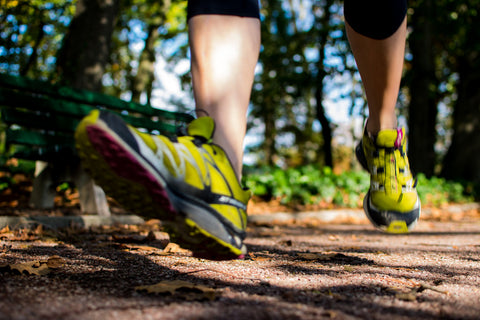
We may be in the dead of winter, but there’s always room for a protein smoothie in the mix! Especially if you’re using them as part of your fitness program or weight loss goals. Make yours better, easier, and more nutritious with these smoothie hacks.
Smoothies are so great; they’re a simple and effective delivery system for proteins like whey powder. We love them on the go, before or after a workout, and as snacks for kids. But smoothies can be so laborious! Here’s how to max your smoothie benefits with a few simple hacks.
1. Pre-measure your smoothie: Granted, this will take you a bit of work a few times a month, but it’ll save you time in the long run. Got a favorite (or a few) smoothie recipe? Cut and measure out your frozen fruits (essential to any smoothie) and freeze them in individual bags for easier dump and blend smoothies.
For one smoothie, try using ½ of a banana, a cup or so of other fruits like berries, peaches, or pineapple. And add in a couple handfuls of chopped greens like kale, spinach, or watercress.
Drop the ingredients into bags, suck the air out before sealing and then simply grab one and mix with your liquid and protein powders.
2. Another excellent smoothie hack is to freeze smoothies after they’re made. Blend up a big batch of your favorite smoothies and freeze them in mason jars (just leave about an inch at the top so it doesn’t break). Defrost your smoothie for about 90 minutes before you plan to drink it. Perfect timing is to pop it out of the freezer just before you head out for your workout.
3. Buy your protein in bulk: There’s nothing worse than heading to the pantry to dole out your protein powder for your smoothie and find there’s barely a scoop left. You’ve got options, though. You can buy in bulk (by the case) to make sure you always have some on hand. Or try setting up an auto-ship subscription so more is always on the way.
4. Max your clean up: Nobody likes cleaning up the gloppy blender, right? Here’s the hack everyone will love: Squirt in some dish soap and water and flip the blender to high and it’ll do most of the cleaning work for you!
5. Get a reusable straw: Whether you make your own smoothies or grab one on the go, straws get lost or forgotten all too often. They also contribute unnecessary waste to landfills. Get yourself a reusable glass, bamboo, or metal straw and always carry it in your purse or gym bag so you’re never left with smoothie mustache.
image: jules:stonesoup

Reading this at your desk? You may just want to stand up, if you’re not already. The verdict is in about standing desks (or other fitness desks) and it’s better than you probably thought.
If you spend a significant amount of your day at a desk, you may have heard that, while the pay may be good, there’s a serious downside: sitting for hours on end isn’t doing your health any favors. In fact, it’s downright lethal, leading to increased risks for earlier death.
Enter the “standing desk” and exercise desks like those built on top of treadmills or exercise bikes. While not a substitute for a true workout, standing or exercising while you work is a multitaskers dream come true. And it may have benefits for your brain as well as your otherwise inactive body.
That’s according to a new study that shows a connection between standing desks and improved cognitive function. The research, published in the International Journal of Environmental Research and Public Health, looked at how high school students performed over the course of the year when they switched to standing desks.
“[C]ontinued use of standing desks was associated with significant improvements in [the students’] executive function and working memory capabilities,” noted lead study author Ranjana Mehta, PhD, of the Department of Environmental and Occupational Health at Texas A&M.
“Interestingly, our research showed the use of standing desks improved neurocognitive function, which is consistent with results from previous studies on school-based exercise programs,” Mehta said. “The next step would be to directly compare the neurocognitive benefits of standing desks to school-based exercise programs.”
The study is the first of its kind to link standing desks to improved brain function, and mirrors other research that’s looked at the relationship between exercise and cognitive skills. And while the research focused on younger students, there’s every reason to believe that a standing or moving desk will help older people too. So get a leg up—literally—and see how standing improves your work performance. And life in general.
image: Jace

Finding the perfect protein product for your health and fitness goals can be daunting. Just spend five seconds in the protein powder aisle of any supermarket or health food store and you’ll be heading to the couch to lay down—not the gym!
Whey protein, casein protein—how do these two popular proteins stack up? Is there one that’s best for you?
Whey protein is a hugely popular protein choice. According to Dr. Josh Axe, it’s the most popular protein powder in the world because of its muscle-building and weight-loss benefits.
Whey’s also an excellent source of amino acids and the super antioxidant, glutathione. Because of whey’s complex chemical profile, it’s been linked to numerous health benefits aside from those that impact your fitness routine. It’s no wonder it’s so popular.
But what about casein protein?
Both whey and casein come from cow’s milk. But that doesn’t mean they’re the same. Casein may also be promoted as “milk protein” because casein is so abundant in milk—about 80 percent of the protein in milk is casein.
Like whey, casein is loaded with branched-chain amino acids. It’s an easily digestible protein, but it stays in the body longer, which may aid in boosting your muscle mass by enhancing protein synthesis.
But if you’re looking for a protein powder to enhance your workout performance, whey might be the better choice because it contains more of the branched-chain amino acids than casein. Whey also works faster, meaning your muscles are going to reap the benefits more quickly with whey than with casein.
Casein is also the protein that causes dairy allergies or sensitivities. So if you have a history of dairy issues, whey is going to be the safer choice.
When choosing either a whey protein or casein protein product, make sure to look for organic and grass-fed sources as they’re going to provide a much cleaner and more nutritious product than conventionally-raised dairy.
image: east midtown

Can’t seem to shake the belly fat even with a vigorous exercise regimen? You may want to have a look at the number of sugary beverages you’re drinking on any given day.
According to recent research published in the journal Circulation, people with a sugary beverage habit are also likely to have a greater accumulation of deep belly fat, also known as visceral fat.
Visceral fat is closely linked with type 2 diabetes and a greater risk of developing heart disease.
The study looked at the dietary habits of more than 1,000 adults and noted that those who consumed at least one sugar-sweetened beverage per day were more likely to see a greater increase in deep abdominal belly fat over the following six years.
While not the first study to link excessive sugar consumption to health risks including belly fat, but, according to the Chicago Tribune, it’s the first study of its kind to suggest a "mechanism" behind the relationship between sugary drinks and belly fat.
“At the outset, 13 percent of the study group said they drank at least one sugar-sweetened beverage every day,” reports the Tribune. “And on average, those men and women showed the greatest increase in visceral fat over the next six years.
“Compared with people who never had sugary drinks, daily consumers accumulated about 27 percent more visceral fat.”
The American Beverage Association, an industry trade organization representing the major manufacturers of sweetened beverages, says the study doesn’t prove that sugary beverages are the cause behind all belly fat.
But it certainly shows strong correlation.
People who regularly consume sugary beverages may also be more likely to consume other less healthy foods including processed and fast foods, making their overall dietary habits ripe for causing the gain in visceral fat.
Looking to reduce your sugary beverage habit?
Start drinking more water, particularly upon waking and again before each meal. The more water you drink, the more hydrated you are and the less likely you’ll be to chug down sugary drinks.
And try to start your day off with a protein-packed smoothie, sweetened only with fresh fruit. Adding a high-quality whey protein to your smoothie will also give you a protein boost that can keep you from craving sugary beverages.
image: orin zebest

Should you eat before a workout if you want to burn fat? Or is after the better choice? Well, are you male or female? Because it matters, says new research out of the UK.
According to the BBC's “Trust Me I'm A Doctor” program, University of Surrey, England, researchers noted that the benefits of exercise varied for men and women, particularly when they ate a meal—before or after the workout, reports the Daily Mail.
Researchers recruited 30 volunteers: 13 men and 17 women who weren’t normally very active. The subjects committed to an exercise regimen, taking three fitness classes a week for four weeks-- a high intensity training class, Zumba and a spin class. The researchers measured how much fat the volunteers burned at the beginning and end of the experiment, including how much fat they burned while resting. They also measured blood fat and blood sugar levels as well as waist size.
The participants were asked to consume a beverage before and after class that was either a calorie-controlled carbohydrate drink or a calorie-free placebo.
What the researchers noted was rather interesting: when women consumed the carbohydrates before the workout, they burned more fat than the men by as much as 22 percent more.
For the men, the opposite was true; in general they burned less fat, and after the workout caloric intake helped them to burn 8 percent more fat overall.
The reason may have something to do with how muscles store carbohydrates. Because men are naturally more muscly than women, if they push more carbs into their bodies before a workout, the body will burn through those (since there is already the reserve in the muscles) and never burn the fat.
For women, the researchers noted eating carbohydrates before the workout is ideal, and if fat-burning is the goal, wait at least 90 minutes after exercising before eating. In fact, the researchers note that eating too early after a workout can stop the (female) body’s fat-burning process, essentially undoing all the exercise if the goal is weight loss.
And to maximize weight loss efforts, combine a slow carbohydrate such as a whole grain, legume, or not-to-sweet fruit, with a high protein food, such as whey protein.
image: whologwhy

Everyone’s favorite pre- and post-workout recovery food seems to have some secret benefits--good news if you've been diagnosed with type 2 diabetes.
There’s an obesity epidemic in the country right now. According to the Centers for Disease Control and Prevention, more than one-third of U.S. adults are obese, and with obesity comes numerous risks for diet-related illnesses such as type 2 diabetes. The CDC also estimates that more than 29 million Americans—about 9 percent of the population—suffer from type 2 diabetes.
Type 2 diabetes occurs when too much sugar (in any form) is in the diet on a regular basis—which is also a hallmark behavior connected to obesity. The more processed, sugary foods we eat, the more likely we are to become obese and increase our risk for type 2 diabetes, a chronic illness that impairs insulin function in the blood to control blood sugar levels.
Whey protein, which is prized for being a muscle building and weight loss aiding superfood, may help in moderating blood sugar levels, too. That’s the findings of several studies looking at the impact of protein-rich foods on insulin levels.
Compared to other lean proteins like fish or eggs, whey protein showed the most notable benefits. Authority Nutrition says it may even be comparable to diabetic drugs like sulfonylurea (although you should never stop taking a prescription drug for diabetes unless advised by your primary care physician).
While whey protein may be beneficial for individuals already diagnosed with type 2 diabetes, its blood sugar moderating abilities may be even more effective as a defense against getting the disease in the first place.
Consuming whey before or with an excessive amount of carbohydrates and sugars may help to slow the release of sugar into the bloodstream, keeping insulin effective at doing its job, and reducing the risk of developing type 2 diabetes.

Are fitness plans among your New Year’s resolutions for 2016? You may want to make sure your kids are aiming to be active this year as well as new research points to the healthy gut bacteria as a benefit of early exercise habits.
The research, conducted by University of Colorado at Boulder, was published in a recent issue of the journal Immunology and Cell Biology.
According to the research, regular physical activity at a young age can help friendly gut bacteria proliferate, and influence your metabolism over the course of your life.
Our digestive systems begin to colonize with bacteria shortly after we’re born. One of the most prolific components in breast milk is indigestible by babies; it’s meant instead for bacteria that inhabit the growing digestive tract, the microbiome. These bacteria use it as food, and as they grow and cover the intestines, they help prevent the onset of illnesses and diseases.
Gut health in infancy will influence gut health as adults, the researchers note. And maintaining that health throughout life may come down to how active an individual is.
“In one study, for example, juvenile rats who voluntarily exercised daily went on to develop a microbial community containing more ‘good bacteria’ in the gut compared to their sedentary counterparts, or adults who also performed physical activity,” reports Forbes.
While it’s still not known why or when the exercise activity begins to benefit gut health, but the researchers note it’s a significant discovery as gut health also correlates to brain health.
“Previous research has shown that the human brain responds to microbial signals from the gut, though the exact communication methods are still under investigation,” reports Science Daily.
"Future research on this microbial ecosystem will hone in on how these microbes influence brain function in a long-lasting way," said Agniezka Mika, a graduate researcher in CU-Boulder's Department of Integrative Physiology and the lead author of the new study.
The research also comes just after another study looked at the physical fitness levels of obese people and determined health is still at risk from obesity-related early deaths, even if the overweight person exercises, pointing to an ongoing link between eating a well-balanced, healthy diet, and maintaining physical activity on a regular basis.
image: phalinn

It’s the most popular beverage for a reason. Coffee is a stimulant that most of us rely on to jumpstart our mornings and keep us going throughout the day: Americans consume about 27.3 ounces of coffee per day, about 1,000 milligrams per person. Now, new research suggests that drinking coffee may also enhance endurance, making your workouts more effective.
The research, published in the International Journal of Sport Nutrition and Exercise Metabolism, looked at existing data on coffee and its relationship to sports performance.
Simon Higgins, lead author out of the University of Georgia looked at more than 600 existing studies to better understand caffeine and coffee in particular in relation to exercise.
While opinions on caffeine’s impact on fitness have changed over the years, the current research says caffeinated coffee can enhance endurance performance. (In the 1980s scientists believed it did not enhance performance, a flip from findings in the ‘70s. In the ‘90s, the opinion flipped again, supporting caffeine’s impact on endurance.)
The current findings also point to benefits in isolated caffeine, such as what’s found in a dietary supplement over the consumption of coffee. But coffee drinkers will still see results. In fact, there may be other benefits to coffee’s components that increase overall endurance abilities.
"This is helpful for athletes because coffee is a naturally occurring compound,” Higgins explained. “There's the potential that getting your caffeine by drinking coffee has similar endurance benefits as taking caffeine pills."
According to the research, those athletes who consumed 3 to 7 milligrams of caffeine (through coffee consumption) increased their endurance performance by a whopping 24 percent.
But the researchers note to not overdo it. Too much caffeine can have a deleterious effect on the body. The National Collegiate Athletic Association also considers caffeine as a prohibited substance if urinary levels exceed 15 μg/ml. But you’d have to drink a lot of coffee to hit those levels; about 17 cups.
Image: victor camilo

Your health and fitness goals may be more easily met with the addition of a high-quality whey protein, finds new research, particularly if the whey is fortified with calcium, vitamin D, and prebiotic dietary fiber.
The research was conducted by Lithuanian scientists and published in a recent issue of the Journal of Food.
The study’s goal was to better understand how or if adding calcium, vitamin D, and the prebiotic fiber would impact the health of the study volunteers. The researchers were also looking at overall impact on taste of the beverages as well—an important factor in encouraging consumption of healthy drinks.
"Sometimes consumers agree to compromise sensory attributes for other perceived benefits, such as nutritional value or country of origin of the products. However, if the sensory attributes of the product do not meet consumers' expectations, it is unlikely that such product will be used again," the researchers said.
While taste didn’t seem to vary too much between the two types of beverages, the samples made with calcium phosphate seemed to not fare as well after a period of time.
But as for health, after a three-week period, the test subjects’ blood showed notable decreases in LDL cholesterol, which is considered the “bad” kind of cholesterol linked with heart disease.
The study highlights whey’s inherent benefits—not just as fuel for fitness enthusiasts seeking to build muscle or lose weight. Its ability to assist in the decrease of LDL cholesterol makes it a legitimate health doos.
"Nowadays, consumers can find very different functional products with the same ingredients and the same effect on health, so sensory properties of products should meet consumers' expectations in order to encourage consumers to include the product in their diet," the researchers concluded.
Quality of whey protein may also play a role in its health-promoting effects. A grass-fed organic whey product is going to be free from harmful levels of antibiotics, pesticides and herbicides, genetically modified ingredients, and growth hormones routinely fed to conventionally-raised livestock animals.
image: carbon nyc

We all do it. We make those dreaded overly-ambitious New Year’s resolutions. Under the influence of too much eggnog and cozy fireplaces, most anything seems possible. Even though most of us fail to meet our goals in the very first week of the New Year! But those resolutions can be easy to keep. That is, if we make a fitness plan we can actually stick to.
Want to look back at 2016 as the year you actually did everything you resolved to do? Then start here, with an achievable fitness plan designed to get you off the couch and keep you moving toward your goals.
- Identify your goal: We often make those vague resolutions that are easy to cheat on or give up altogether. But if we make them more resolute, it’s going to be easier to keep them. What is the goal of your fitness plan? To lose weight? Build muscle? Run a marathon? Once you identify your specific fitness goals, you’ll be much more inclined to stick with it than if you just resolve to “go to the gym more.”
- Create a workable schedule: If you tell yourself you’re going to get up at 5 am every day and hit the gym, you best not be one of those late-night Netflix bingers who stays up until 2 am. Make a schedule you can and will keep. And give yourself room to grow into a new fitness plan too. It might be more achievable to say you’ll hit the gym 2 days a week if your current visits are sporadic or zero. Then you can start going more frequently once you’re in the swing of things.
- Avoid the rut: Predictability can be the death of any fitness plan. Knowing what comes next can put us on autopilot and make us work less toward our goal. So maybe you need a bit of variety: spin class on Tuesdays, going for a run in a new part of town on Thursdays, and a yoga class on Sunday. There are endless ways to mix up a workout at the gym, too. Do what you need to do to keep things fresh and exciting, particularly if you’re prone to get burned out or bored easily.
- Enlist a buddy: It may seem kind of desperate to get a friend on board with you, but it’s actually one of the best ways to stick to a fitness plan, especially if you both have similar goals. It makes all the work and the rewards that much more meaningful if you’re sharing the experience.
- Schedule a reassessment: You won’t know if your fitness plan is working until you’ve been at it for a while—at least a few weeks. And if this is all new to you, setting up time to check in with yourself is really crucial, even if you’re just ticking up the number of workouts by one a week. So, set a time—about 6 weeks into the New Year to get real with yourself. How is the workout schedule working out—both for your fitness goals and the rest of your life? Do you need to move anything around? Are the classes or workouts working for your fitness goals? Is there anything you need to adjust? Setting up the time to reevaluate your fitness plan removes the “I failed” on meeting the New Year’s resolutions. But it’s also not a built-in cop out. It’s one of the best tools to keep you going—the opportunity to adjust and keep moving forward successfully.
Image: Ludovic Rouchy Photography


